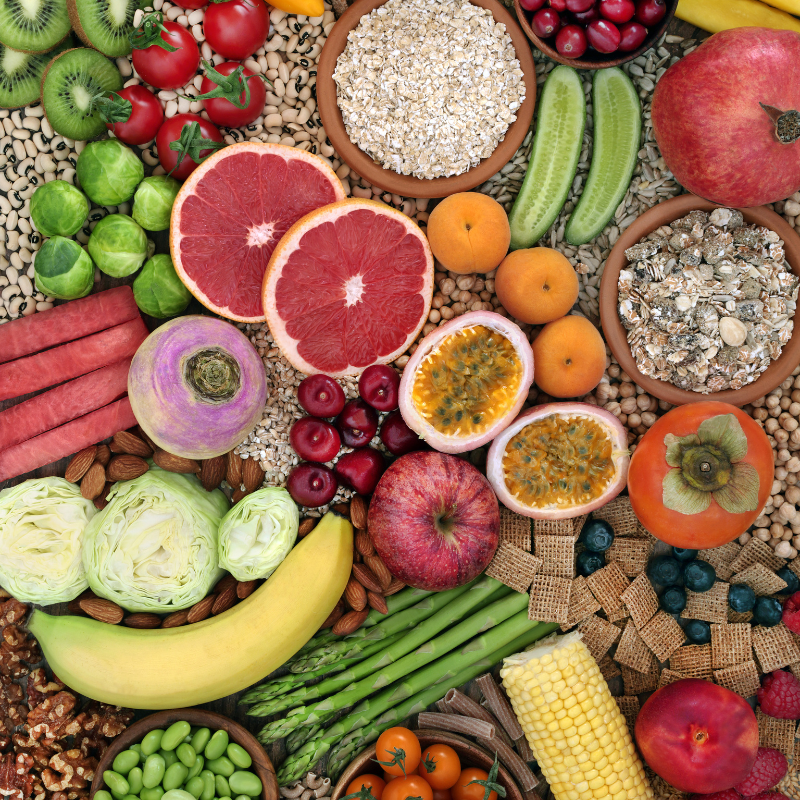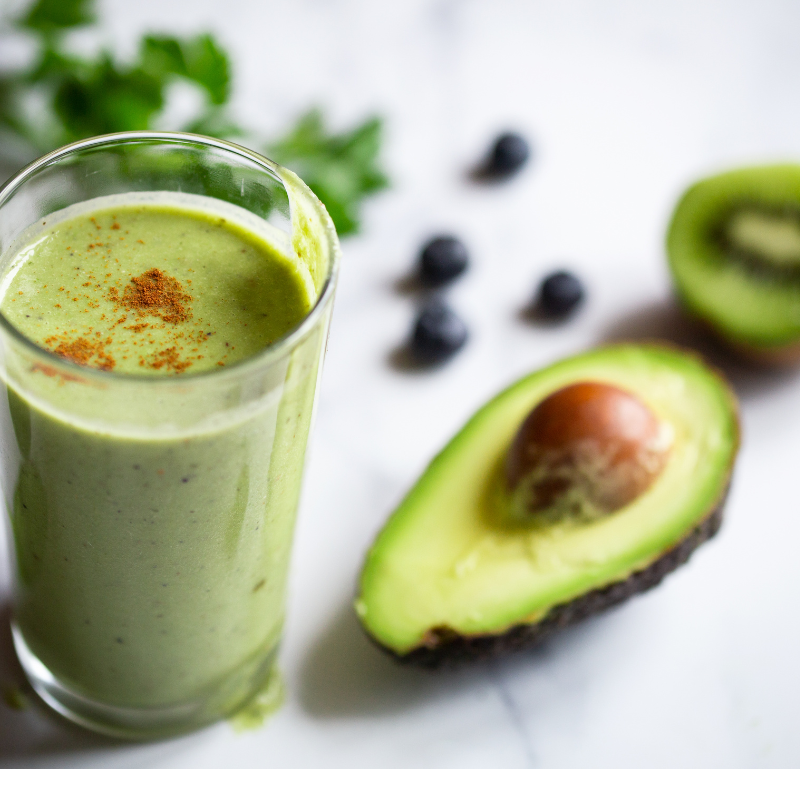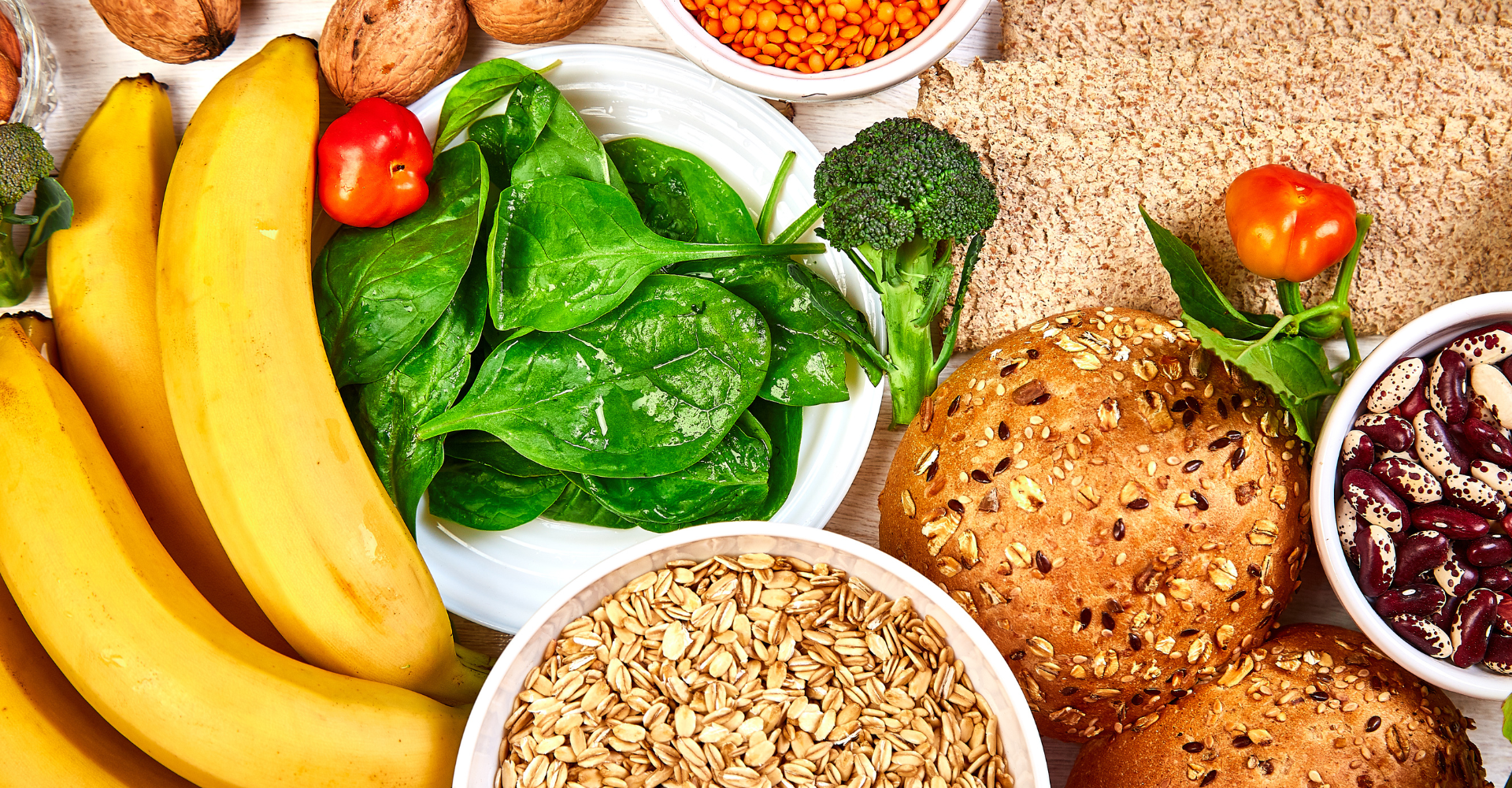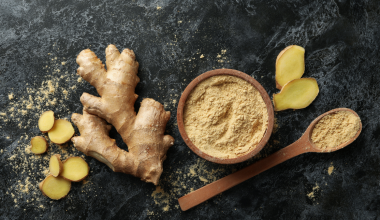February is heart month, so this article is all about helping you keep your ticker healthy. This month I’m putting the spotlight on fibre. Why? Because apart from keeping blood sugar in check and aiding in overall digestive health, it is one of the best ways to keep your heart game strong.
Fibre & Your Heart

Eating a diet high in fibre can significantly reduce your risk of cardiovascular disease. Fibre is a carbohydrate (from plant-based foods) that your body can’t break down, so it passes through the body without being digested. It comes in two varieties: insoluble and soluble.
Insoluble fibre does not dissolve in water and is intact as food moves through the gastrointestinal tract. It’s found in whole grains, wheat bran and flour, nuts and vegetables.
Soluble fibre easily dissolves in water and breaks down into a gel-like substance in the colon. Sources include barley, oatmeal, beans, apples, citrus fruits and peas.
As it turns out, both types of fibre are linked to heart health. Numerous studies link a diet rich in fibre with reduced risk of cardiovascular disease. Soluble fibre (found in foods like oats) have been shown to lower levels of LDL cholesterol (the “bad” cholesterol). At the same time, dietary fibre seems to improve blood lipid profiles as well as lower blood pressure,

Recommended daily fibre: 30 grams for women and 38 grams for men (I get 40 grams+ daily whenever possible).
It’s not hard to get your daily fibre grams and the health benefits are big.
Fibre Rich Foods
In addition to being high in fibre, the foods below all have other properties that support heart health and function.
Berries: they’re full of soluble fibre and heart-healthy phytonutrients that help prevent (and repair) cell damage. Different berries have different types of phytonutrients, so switch it up between blueberries, raspberries, goji berries. In addition to frozen whole berries, I often add powder-format berry extracts like acai and camu camu to my smoothies.
Dark Leafy Greens: fibre-rich and high in Vitamin K, which supports heart arteries and healthy blood clotting. They also contain calcium, which supports blood vessel function. Spinach, kale, Swiss chard, collard/mustard greens and bok choy are great choices.
Seeds: packing 5 grams of fibre per TBSP, as well as being Omega-3 and magnesium-rich, chia, hemp & flax seeds are an easy way to give your meals a ‘heart healthy’ boost. Add them into smoothies, cereal, hummus and dressings.
Avocado: not only does one avocado (medium size) give you about 12 grams of fibre, it’s also high in Vitamin K, magnesium and Potassium (an important mineral and heart-essential electrolyte).
Other Heart-Healthy Foods To Get in Your Diet
Omega-3 rich foods: omega-3 may protect your heart by helping reduce inflammation (which can damage heart vessels), lower triglycerides (a fat in your blood), reduce blood pressure and prevent blood clots. Salmon, trout, mackerel, sardines, and seeds (hemp, chia, flax) are all high in omega-3.
Magnesium: central to a healthy heart rhythm because it’s involved in transporting other electrolytes, such as calcium and potassium, into cells. Electrolytes are all important for nerve signals, controlling blood pressure, and the muscle contractions of a normal heartbeat.
Heart Healthy Recipes
Breakfast: The Green Goodness Smoothie

½ avocado (or ½ cup frozen pieces)
1 cup organic spinach or kale
½ banana (medium size)
½ cup blueberries
2 TSP almond butter
1 TBSP chia seeds
1 cup plain (no sugar added) almond milk (go for the refrigerated vs shelf-stable tetra pack types)
½ cup ice (optional)
Snack: Easy Chia Cups (makes 3 to 4 servings)
The Base:
- 1 1/2 cups almond milk (or any dairy-free milk)
- 1/2 cup chia seeds
- 1 tbsp real maple syrup
- 1 tsp vanilla extract
In a mixing bowl add almond milk, chia seeds, maple syrup (to taste), and vanilla. Whisk to combine. Cover and refrigerate overnight (or at least 6 hours). The chia pudding should be thick and creamy. If liquid form, add more chia seeds, stir, and refrigerate for another hour or so. Add toppings and serve.
Topping ideas: berries, shredded coconut, dice tropical fruits like mango & pineapple, chopped nuts.
Storage: you can fridge-store your chia pudding in an airtight for up to 5 days.
Lunch: Crispy Quinoa & Roasted Veggie Salad
Dinner: Oh She Glows Power Bowl
I love prepping this power bowl recipe ahead and having the cooked ingredients stocked in the fridge, ready for quick-assembly bowls.
Add-on option: 3 oz of wild salmon or other omega-rich fish (per serving).
Looking for new recipes? Here are two go-to sites I turn to when looking for inspiration:
The Minimalist Baker (high fibre recipes: link)
Deanna Embury, Founder of Blended For You, is a regular contributor to The Health Insider. She is passionate about nutrition, wellness and helping people reach their personal health goals. Blended For You provides ready-to-blend (or eat) gluten-free, plant-based, all-natural and complete nutrition smoothies, soups & chia bowls. Get 25% off your first order with code HEALTHINSIDER25 or click this link, shop & the discount auto-applies.
The views and opinions expressed in the submitted article are solely those of the author(s) and do not necessarily reflect those of the The Health Insider. The publisher disclaims any responsibility or liability for such views, including any errors or omissions in the content provided. The information provided on TheHealthInsider.ca is for educational purposes only and does not substitute for professional medical advice. TheHealthInsider.ca advises consulting a medical professional or healthcare provider when seeking medical advice, diagnoses, or treatment.










